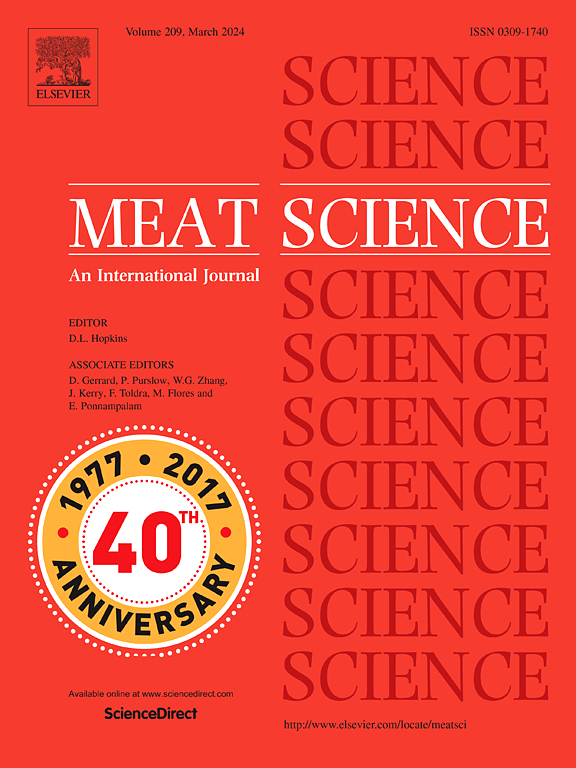中国消费者对牛肉的认知和购买行为 - 主要在华北和华东地区
IF 7.1
1区 农林科学
Q1 Agricultural and Biological Sciences
引用次数: 0
摘要
牛肉是中国人的重要食品,了解影响其满意度和购买行为的内在和外在因素对行业发展十分必要。我们通过在线调查证实了这一点,调查包括 26 个问题和 3617 个有效回复,主要来自华北和华东地区的居民。调查发现,47.7% 的中国居民喜欢吃牛肉,他们认为牛肉健康且营养价值高。大多数受访者(58.2%)喜欢吃冷藏牛肉,而不喜欢吃带骨或冷冻产品。牛腿肉是中国消费者最喜欢的牛肉切块,反映出炖煮是烹饪牛肉的首选方法。中国消费者在消费频率、购买地点和牛肉最重要的感官品质方面存在人口统计学差异。与女性消费者相比,男性消费者更重视牛肉的大理石花纹(P < 0.05)。肉色、大理石花纹和价格是受访者购买牛肉时考虑的前三个因素。饮食和烹饪习惯对消费者购买牛肉的意愿影响最大。这些研究结果将有助于支持华北和华东地区以消费者为导向的牛肉生产和加工。本文章由计算机程序翻译,如有差异,请以英文原文为准。
Chinese consumer perception and purchasing behavior of beef – Mainly in North and East China
Beef is an important food for Chinese people and understanding the intrinsic and extrinsic factors that impact on their satisfaction and purchasing behavior is necessary for industry growth. This was confirmed using an online survey that included 26 questions and 3617 valid responses, mainly from people located in North and East China. It was found that 47.7 % of Chinese residents like to eat beef, and they perceive beef as healthy and of high nutritional value. Chilled beef, exclusive of hot-boned or frozen products, was preferred by the majority (58.2 %) of respondents. Shank was the most popular beef cut for Chinese consumers, reflecting that stewing was found to be the preferred method for cooking beef. There were demographic differences in consumption frequency, purchase location, and the most important sensory qualities of beef for Chinese consumers. Male consumers placed more importance on the marbling of beef compared to female consumers (P < 0.05). Meat color, marbling, and price were ranked as the top three factors considered when respondents were purchasing beef. Eating and cooking habits had the strongest effect on consumer willingness to purchase beef. These findings will help to support consumer orientated beef production and processing in North and East China.
求助全文
通过发布文献求助,成功后即可免费获取论文全文。
去求助
来源期刊

Meat Science
工程技术-食品科技
CiteScore
12.60
自引率
9.90%
发文量
282
审稿时长
60 days
期刊介绍:
The aim of Meat Science is to serve as a suitable platform for the dissemination of interdisciplinary and international knowledge on all factors influencing the properties of meat. While the journal primarily focuses on the flesh of mammals, contributions related to poultry will be considered if they enhance the overall understanding of the relationship between muscle nature and meat quality post mortem. Additionally, papers on large birds (e.g., emus, ostriches) as well as wild-captured mammals and crocodiles will be welcomed.
 求助内容:
求助内容: 应助结果提醒方式:
应助结果提醒方式:


